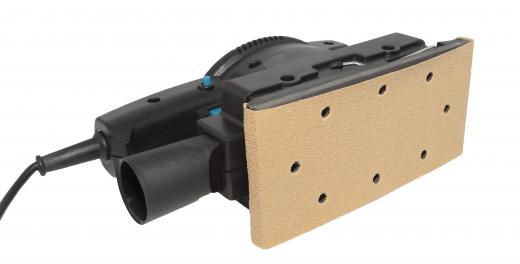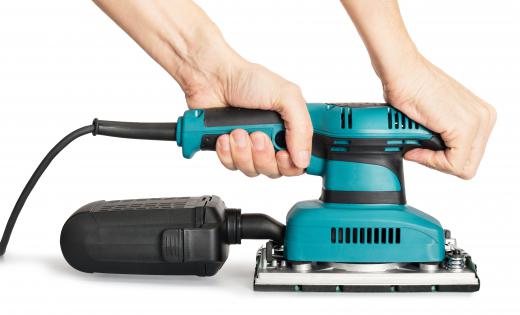A palm sander is a type of power sander that can easily be held and operated with one hand. It is often a good choice for a variety of home improvement tasks involving sanding but will not necessarily do all tasks. Therefore, those interested in a palm sander should understand its limitations, benefits and drawbacks.
The palm sander works by vibrating in a slightly circular patter. This motion causes a very effective sanding action to occur, smoothing the surface of the wood being sanded. They are considered very versatile and can handle both finish sanding and rough sanding jobs.

The palm sander uses normal sheets of sanding paper and has loops the sandpaper can be placed over to secure it in place. Some sandpaper has an adhesive backing that can also be used to secure it to the sander. Once the paper is in place, sanding happens normally, but care should be taken to always follow the wood's grain.
To aid in use, most pad sanders have a rubberized grip that will help maintain the user's comfort. This is especially important for contractors and others who may be using a hand held sander for long periods of time on a nearly daily basis. If this is a feature a user would want, it is best to check the sander out to make sure this is included as not all will offer this.

A palm sander may also be equipped with a collection bag for the dust it creates. Any power sander, and even a manual sander, is capable of putting a large amount of particulate in the air. Therefore, care should be taken, whenever possible, to avoid inhaling as much of this material as possible. Otherwise, it could cause respiratory distress. The collection bag is one way of doing this.
The palm sander, or pad sander as it is sometimes known, is a corded sander powered by an electrical source. Models can be found for as little as $20 US dollars (USD). However, most models tend to run between $50 USD and $80 USD, depending on the brand and features. Most will run at several different speeds and some will have dozens of speed options.
In addition to the pad sander, other types of sanders may also be useful to those involved in woodwork. Other common sanders include the belt sander, drum sander and orbit sander. Disc sanders and spindle sanders are also commonly used. Some sanders may be designed for specific tasks, such as finishing work, while others may be used for rough work. Others, like the palm sander, can handle a little of both.
